Cape Cobra and how to identify them.
The Cape Cobra is Africa’s most venomous Cobra
Field Notes:
A large, impressive cobra, which is arguably one of the most variable in colour and abundant venomous snakes in the Western Cape,. It is often referred to as the most venomous snake in Africa. Although a nervous snake is quick to escape when encountered if cornered, it will not hesitate to spread an impressive hood, mouth agape, and rush forward should the threat not subside. They are ferocious feeders and will feed on a variety of prey, including amphibians, lizards, birds (and their eggs), small mammals, and other snakes – with a particular preference for the highly venomous Puff Adder. May be confused with the similar-sized Mole snake; however, Mole snakes are far more robust.

Cape Cobra – Naja nivea
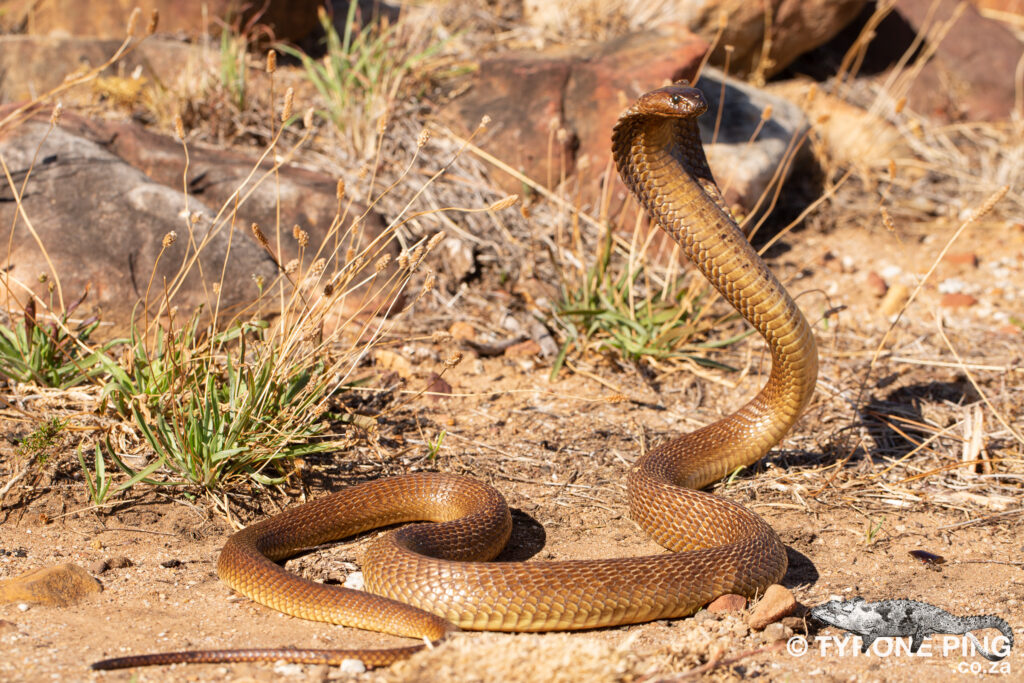
Cape Cobra – Naja nivea
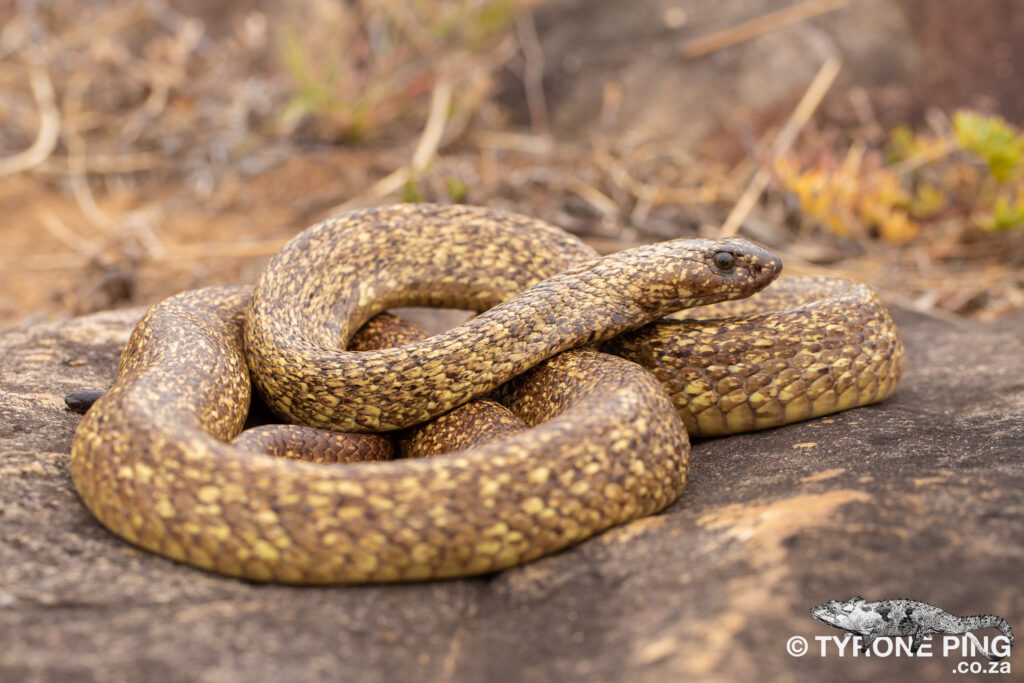
Cape Cobra – Naja nivea
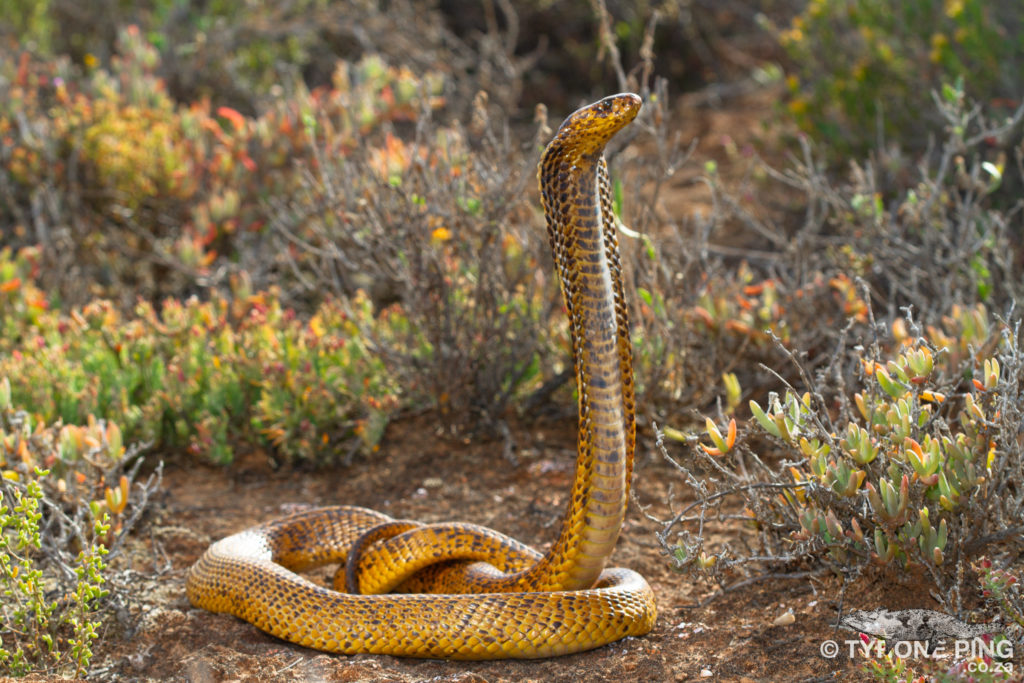
Cape Cobra – Naja nivea
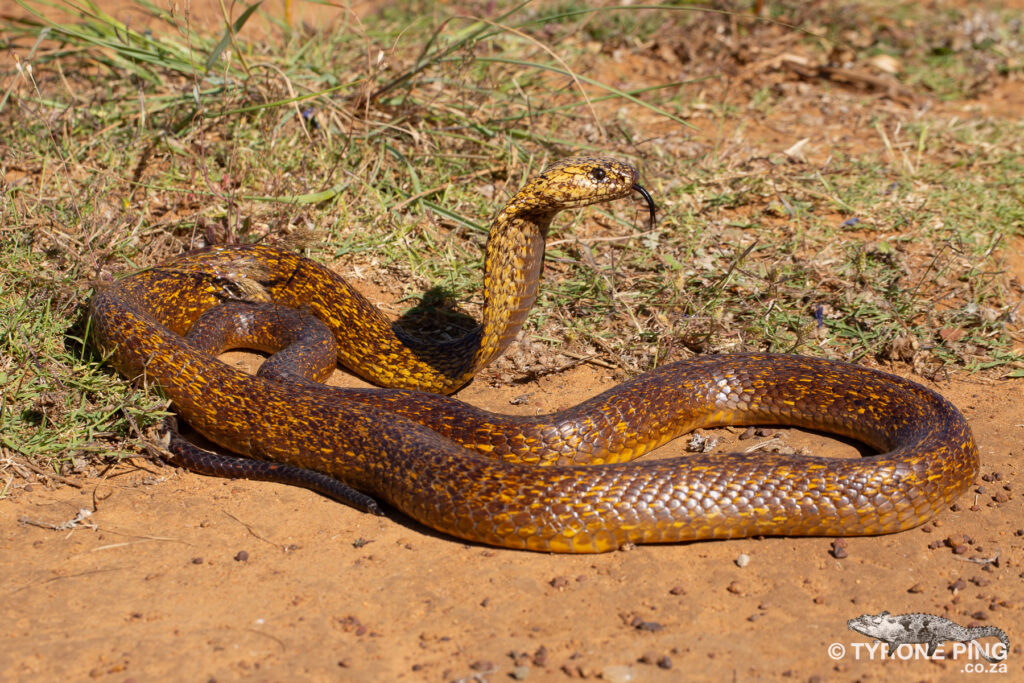
Cape Cobra – Naja nivea
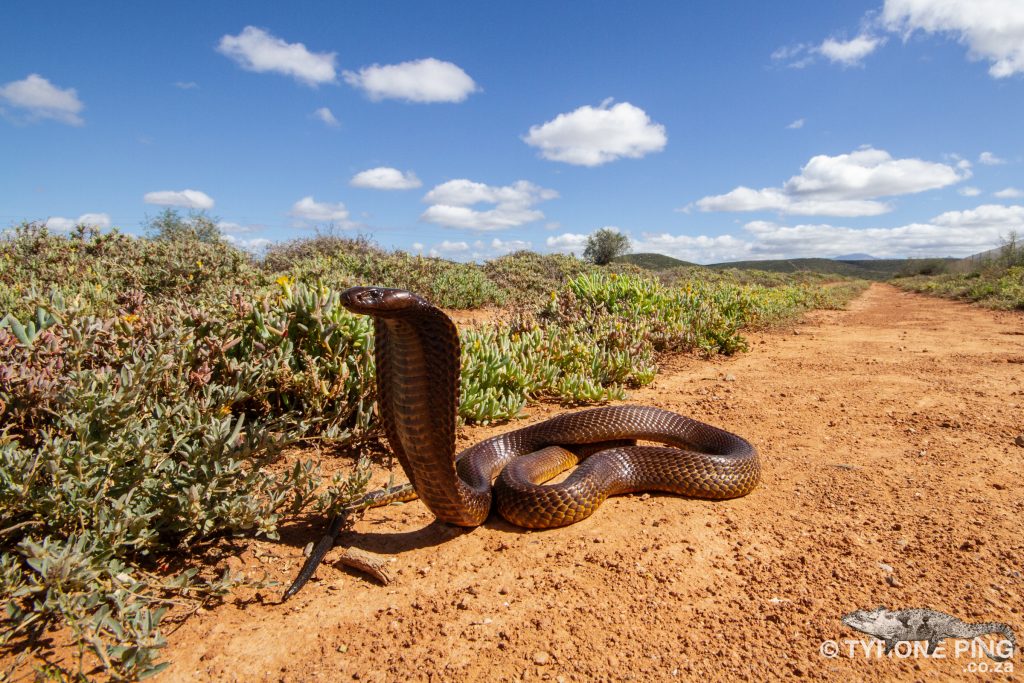
Cape Cobra – Naja nivea
Size:
Hatchlings 25 – 40 cm adults average 1.4–1.6 m and may exceed 2 m.
Colour:
Adults may be bright uniform yellow, orange-brown, pale cream to dirty brown, almost pitch black or a speckled variety, which may be dark with pale speckles or the inverse. The tip of the tail is typically dark. Juveniles are typically yellow with brown speckles and have a distinct dark throat band that fades with age.
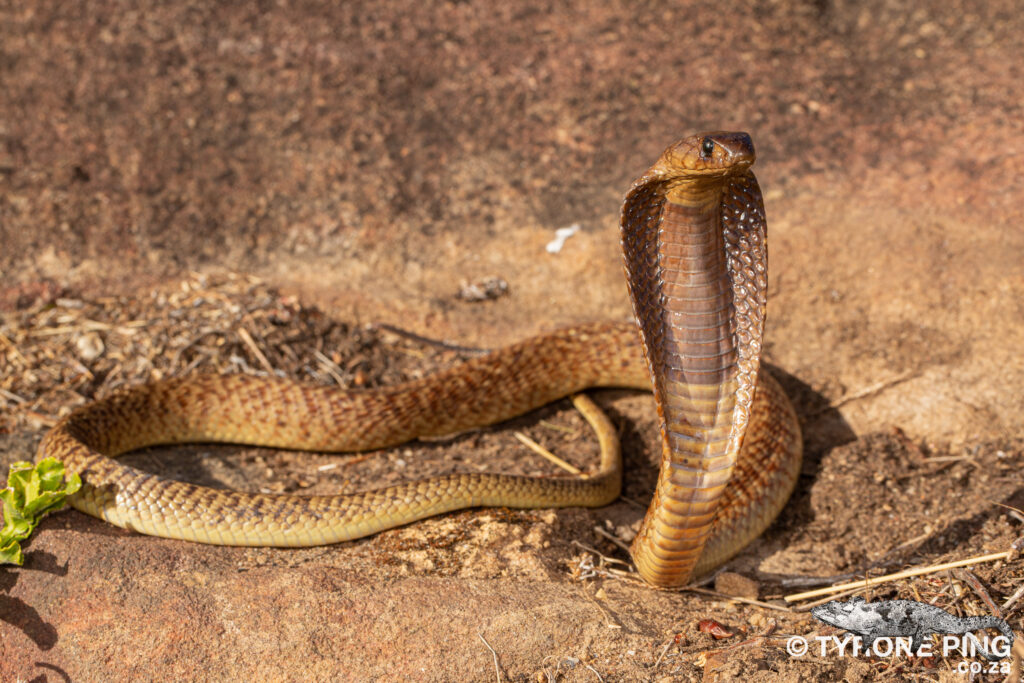
Cape Cobra – Naja nivea juvenile with dark throat band.
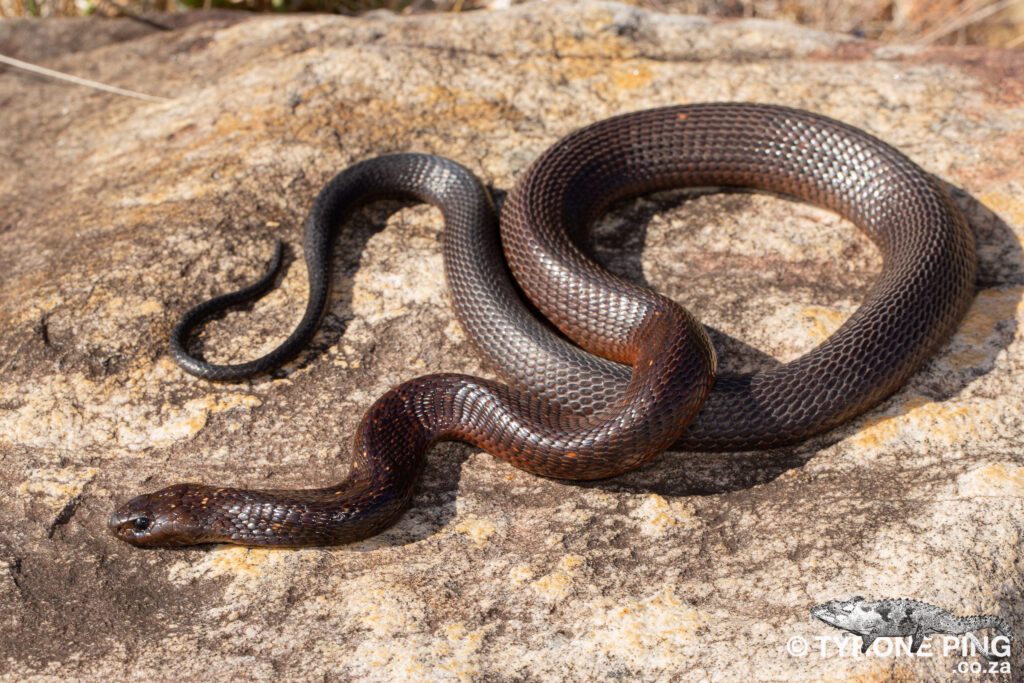
Cape Cobra – Naja nivea
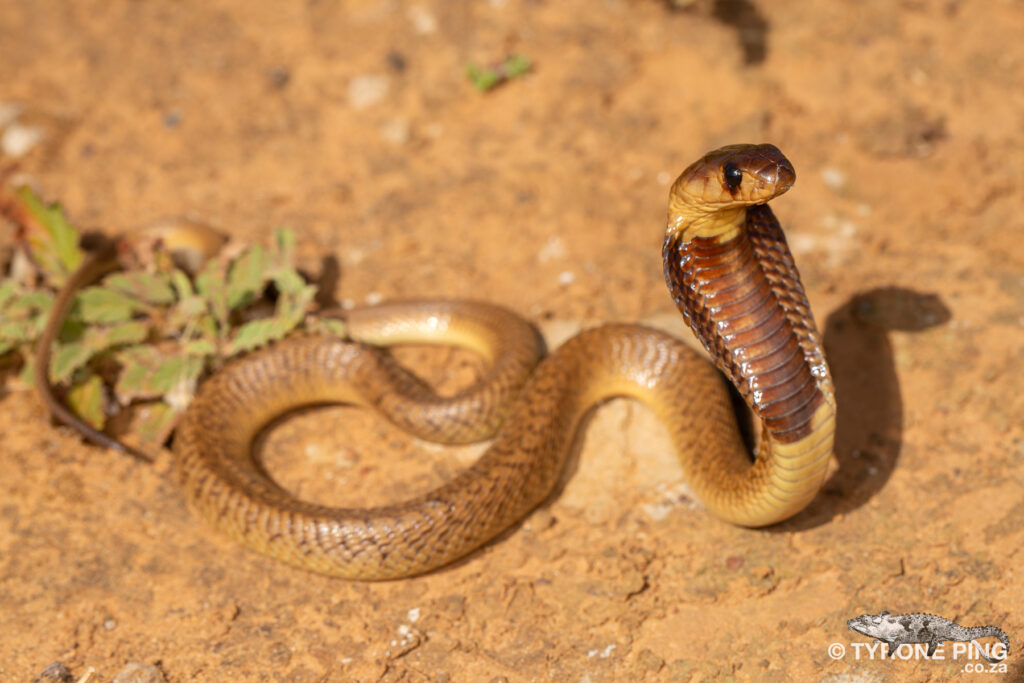
Cape Cobra – Naja nivea
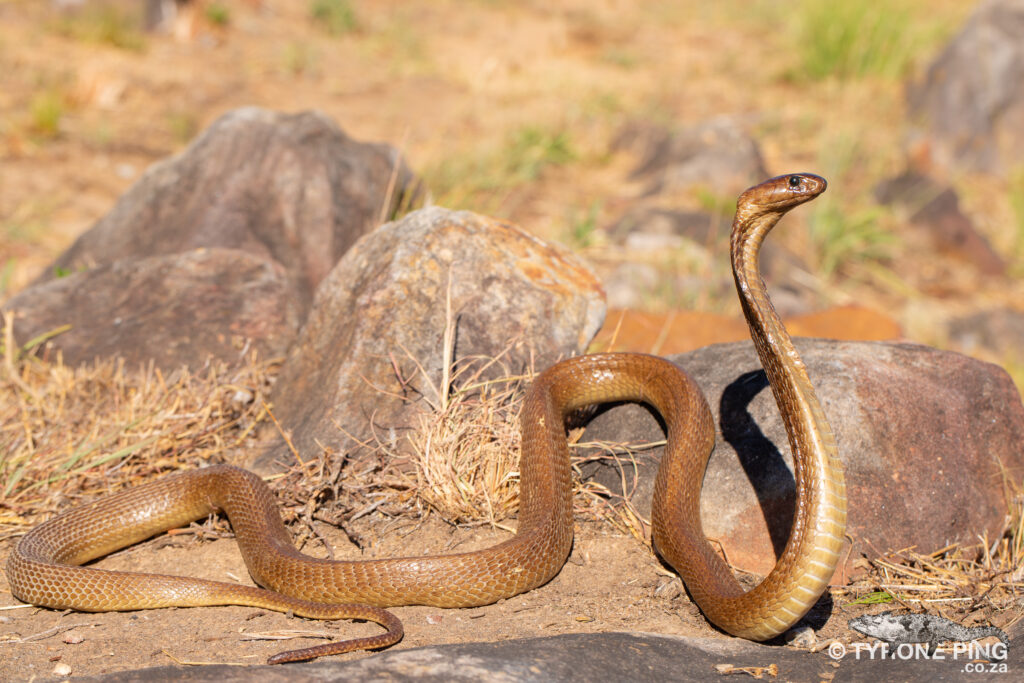
Cape Cobra – Naja nivea
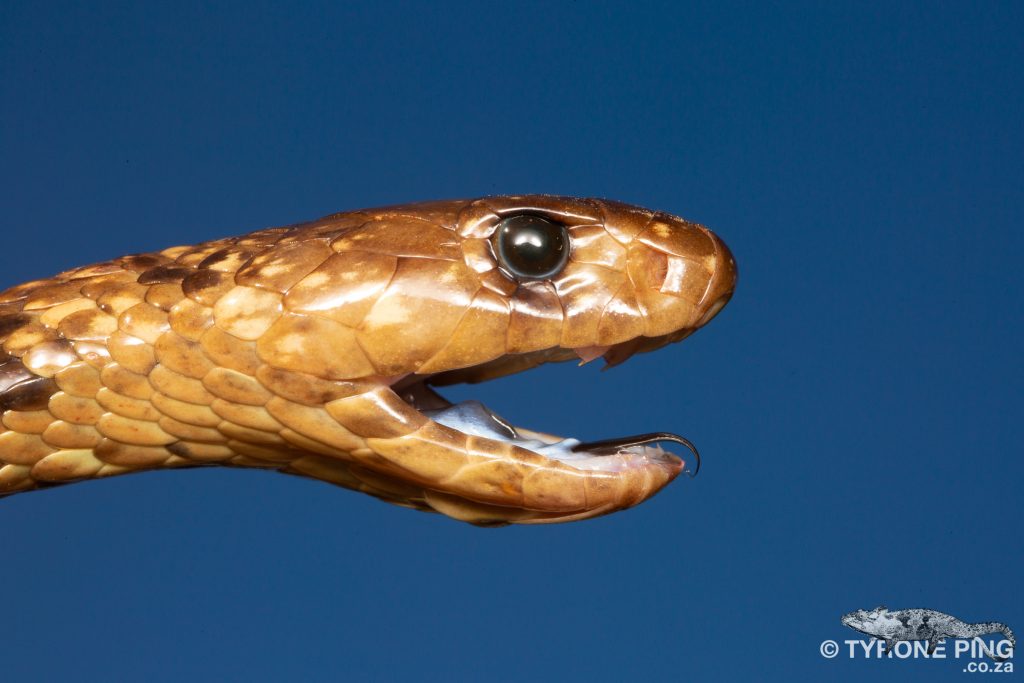
Cape Cobra – Naja nivea
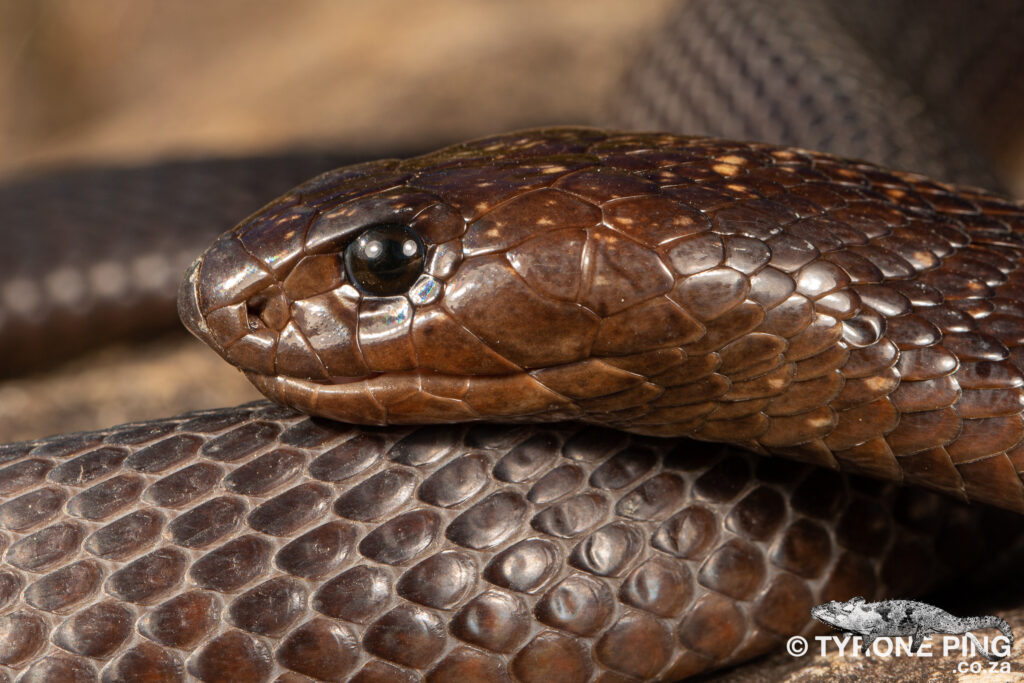
Cape Cobra – Naja nivea
Habitat:
Inhabits include arid Karoo, open Fynbos and Grassland habitats in the Western Cape, Northern Cape, Eastern Cape, Free State and the North West. The Cap Cobra makes use of mammal burrows and under rocks at elevations as high as 1,600 m. Within its range, it is a habitat generalist and well adapted to urban environments. It is often found within town and city limits, especially around Cape Town.
Venom:
A dangerously potent neurotoxic venom, causing progressive paralysis, starting with drooping eyelids, and paralysis of the lungs. Bites are a medical emergency and are treated using polyvalent anti-venom from South African vaccine producers.
Learn more about the different species of Cobra across South Africa by visiting Cobras of South Africa.
Recommended reading for the snakes of South Africa:
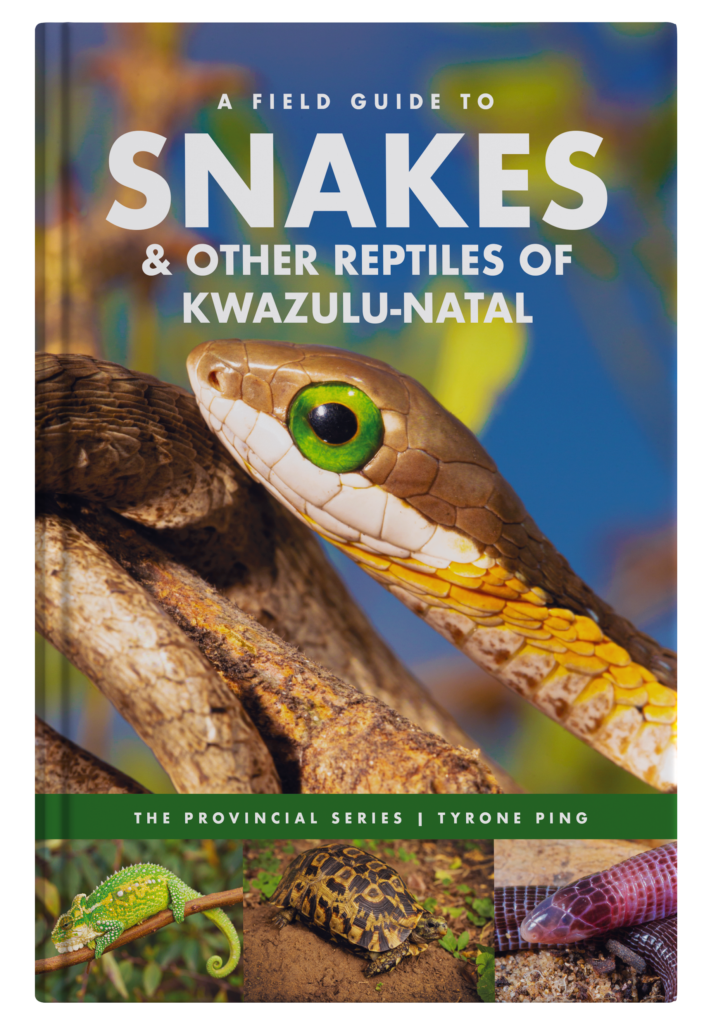
A FIELD GUIDE TO SNAKES & OTHER REPTILES OF KWAZULU-NATAL
A first of its kind for the region, extensively covering the snakes and reptiles of KwaZulu-Natal. Beautifully laid out across 280 pages, 300 colour photographs, concisely written species accounts and species maps of close to 170 species of snakes and reptiles found in KwaZulu-Natal, South Africa.
Author: Tyrone Ping
ISBN: 978-0-620-93177-9
Format: Soft Cover
Release Date: 2022
Publisher: Pachydactylus Press Written and Printed In South Africa
Pages: 280
Recommended reading for the snakes of South Africa:
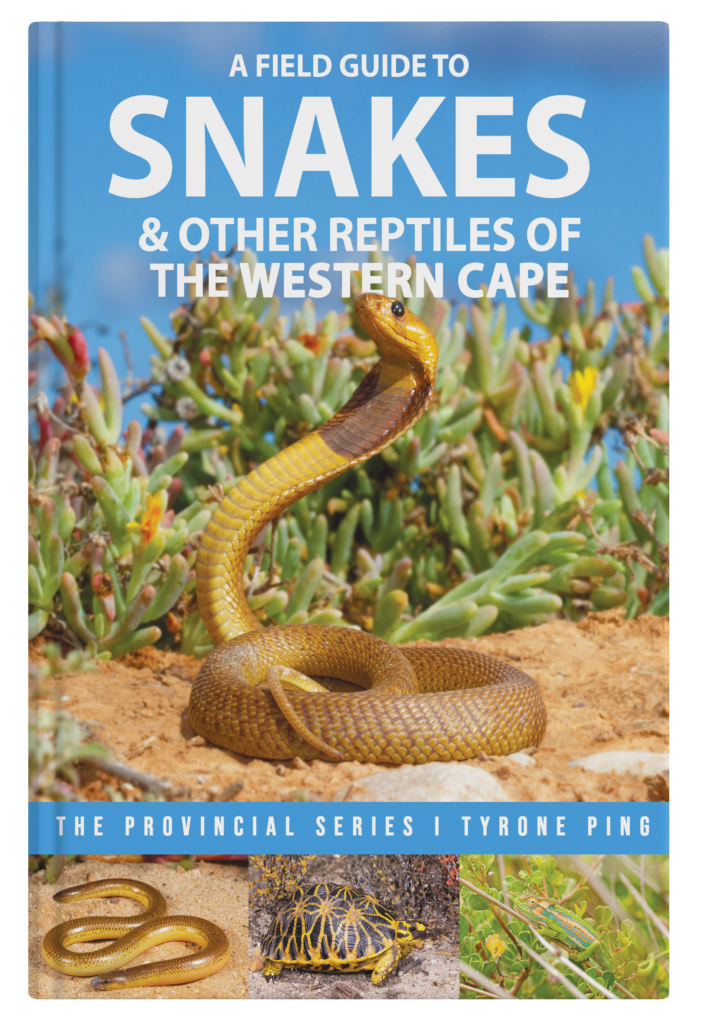
A FIELD GUIDE TO SNAKES & OTHER REPTILES OF THE WESTERN CAPE
In this guide, Tyrone showcases these species in detail, with over 450 colour photographs, concisely written accounts and NEW distribution maps of each species that have been recorded in the region.
The Western Cape is a diverse region with an abundance of unique fauna and flora. With over 150 species of reptiles, some of the most iconic venomous snakes call the Western cape home, from the cape cobra, puff adder and boomlang. Some of the most recently described reptiles have been found in the Western cape.
ISBN: 978-0-620-98814-5
Format: Soft Cover
Release Date: 2023
Publisher: Pachydactylus Press Written and Printed In South Africa
Pages: 300
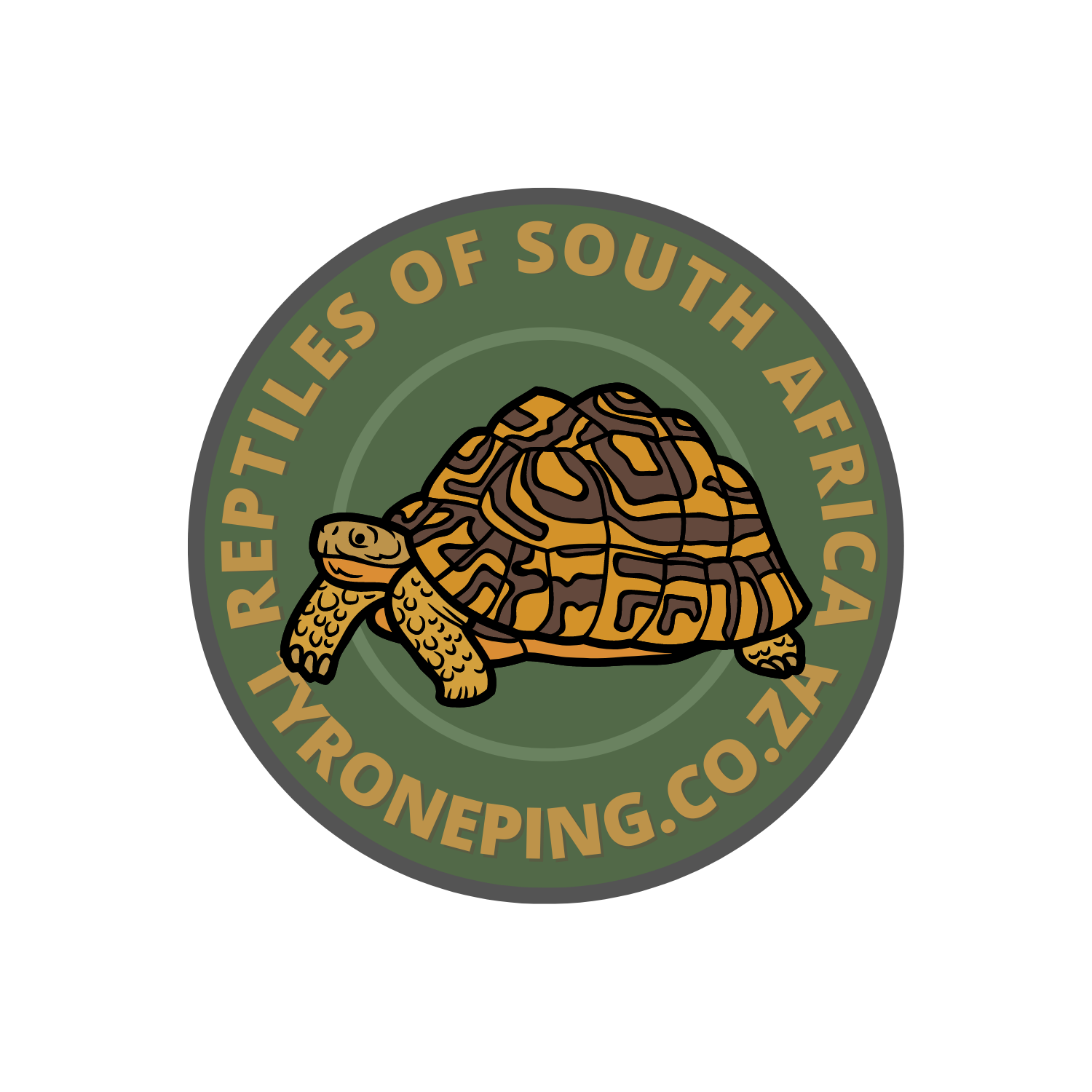

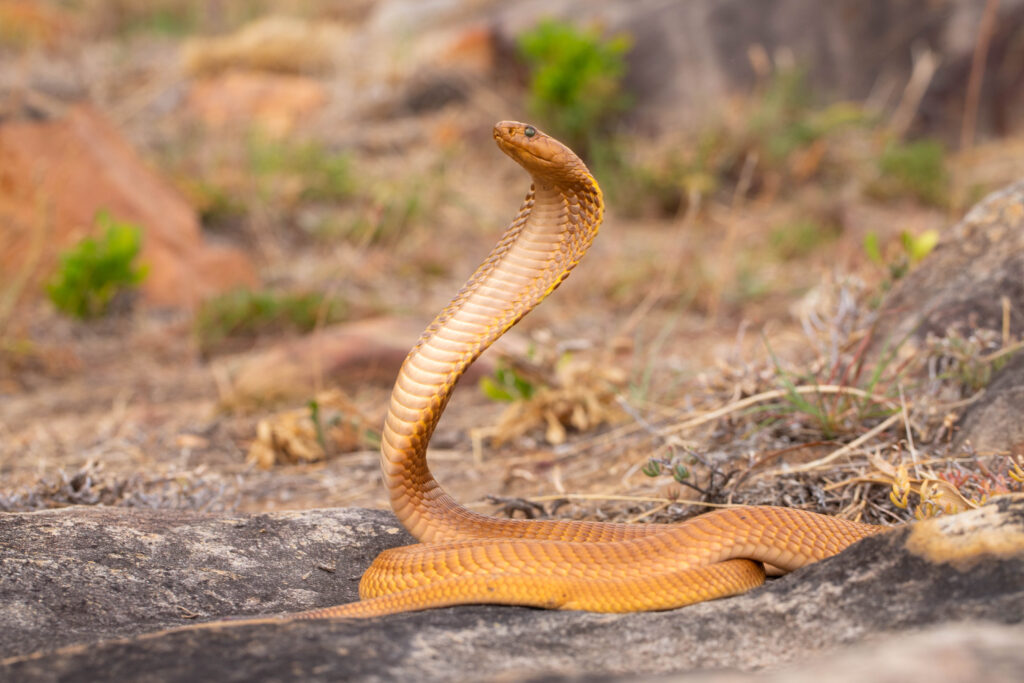
We just saw a Cape Cobra sunning in a Rock outside Khwattu Yzerfontein up on the Koppie.